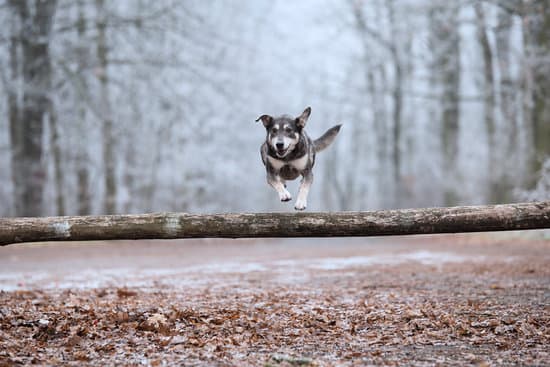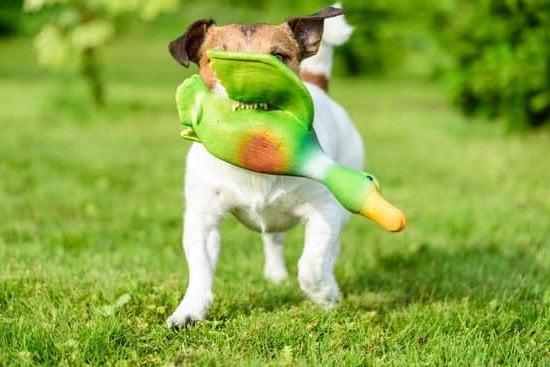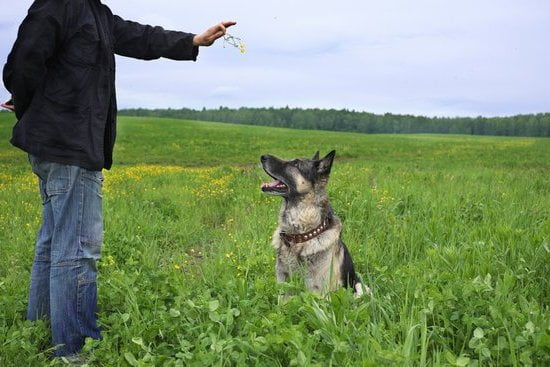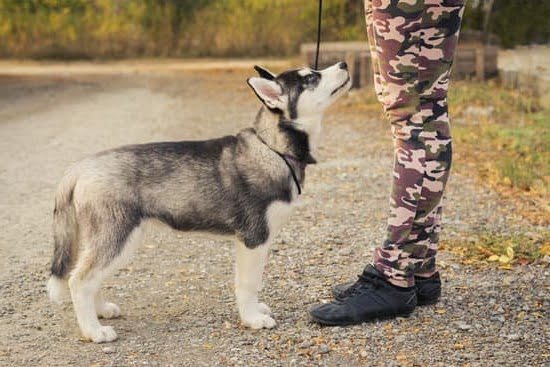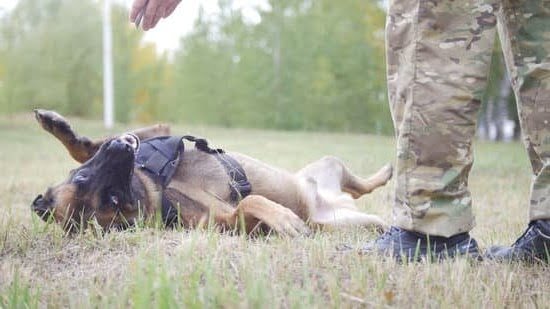Why does my dog pee after being trained? Understanding the behavior of a trained dog is essential to address this common issue. House training your dog is a crucial part of pet ownership, but accidents can still occur even after your furry friend has been successfully trained.
In this article, we will explore the possible reasons why a trained dog might still pee indoors and provide practical solutions and training tips to help prevent these accidents. From medical issues to environmental factors, we’ll delve into various aspects that could contribute to this behavior.
House training a dog involves teaching them where they should and shouldn’t eliminate, establishing a routine, and reinforcing good behavior. Despite going through this process, it’s not uncommon for a trained dog to have accidents indoors. It’s important to consider potential health problems, behavioral issues, and environmental factors that may be causing these incidents.
In the following sections, we will discuss the basics of house training and how changes in routine or environment can impact a dog’s behavior. Additionally, we will explore potential medical and behavioral issues that could lead to accidents even after successful training. By understanding these factors, pet owners can effectively address the underlying reasons for their trained dog’s accidents and provide appropriate solutions for their beloved furry companions.
The Basics of House Training
House training, also known as potty training, is an essential part of ensuring that your dog understands where it is appropriate to relieve themselves. The process typically involves establishing a routine for feeding and bathroom breaks, using positive reinforcement to encourage outdoor elimination, and supervising the dog closely to prevent accidents indoors. Consistency, patience, and praise are key elements in house training a dog, regardless of age or breed.
One important aspect of house training is understanding the signs that indicate when your dog needs to go outside. These signs may include whining, circling, sniffing the ground, or heading towards the door. By recognizing these cues and promptly taking your dog outside, you can reinforce the desired behavior of eliminating outdoors. Additionally, establishing a designated potty area in your yard can help your dog understand where they should go to relieve themselves.
Proper house training requires time and dedication from pet owners. It’s essential to remain consistent with the established routine and provide positive reinforcement when your dog successfully goes outside. Remember that accidents are normal during the house training process and should be addressed calmly and without punishment. By patiently guiding your dog through this process, you can effectively teach them where it’s acceptable to pee while strengthening the bond between you and your furry companion.
| House Training Methods | Description |
|---|---|
| Establishing a routine | Creating a consistent schedule for feeding and bathroom breaks |
| Recognizing signals | Learning to identify the behavior or body language indicating that a dog needs to go outside |
| Positive reinforcement | Using praise, treats, or toys to reward outdoor elimination |
Possible Reasons Why a Trained Dog Might Still Pee Indoors
When a dog has been successfully trained to pee outdoors, it can be frustrating for pet owners when the behavior suddenly changes and accidents start happening indoors. There are several potential reasons why a trained dog might still pee indoors, ranging from medical issues to environmental factors and behavioral issues.
- Marking territory: Some dogs, especially male dogs, may continue to mark their territory even after being house trained. This behavior is more common in unneutered males but can also occur in spayed or neutered dogs.
- Lack of bladder control: Just like humans, some dogs may have difficulty holding their bladder for extended periods of time. This can be more common in senior dogs or those with certain health conditions.
- Stress or anxiety: Changes in the dog’s environment or routine can lead to stress and anxiety, which may cause them to revert back to indoor peeing. This could be triggered by anything from moving to a new home to the addition of a new pet or family member.
It’s important for pet owners to observe their dog’s behavior and look for any patterns or triggers that could be causing the indoor accidents. Consulting with a veterinarian or professional dog trainer can also provide valuable insights into the underlying reasons for this behavior and how best to address it. Remember that patience and consistency are key when working through these issues, and with the right approach, most dogs can be successfully retrained to consistently pee outdoors.
Medical Issues
Possible health problems could be the reason why a trained dog might still pee indoors. It’s important to consider medical issues as a potential cause, especially if the accidents are sudden or out of character for your pet. Some common health problems that could lead to inappropriate urination include urinary tract infections, bladder stones, diabetes, and kidney disease.
Urinary tract infections (UTIs) can cause dogs to have accidents inside the house because they experience a frequent and urgent need to urinate. If your dog is drinking more water than usual, straining to urinate, or showing signs of discomfort while peeing, it’s important to consult a veterinarian as these could be symptoms of a UTI.
Bladder stones and other urinary issues can also lead to accidents indoors. When dogs experience pain or discomfort while urinating due to these conditions, they may associate the act of urination with discomfort and try to avoid it altogether. This can result in accidents inside the house even if they have been previously trained not to do so.
| Possible Health Problems | Symptoms |
|---|---|
| Urinary Tract Infections (UTIs) | Increased thirst, frequent urination, straining, discomfort |
| Bladder Stones | Pain or discomfort while urinating |
| Diabetes | Excessive thirst and hunger, frequent urination |
Behavioral Issues
Separation Anxiety
One possible reason why a trained dog might still pee indoors is due to separation anxiety. Dogs are pack animals by nature, and being left alone for extended periods can cause anxiety and distress. This anxiety may manifest in behaviors such as urinating indoors, destructive chewing, or excessive barking. It’s important to address separation anxiety through desensitization training, providing a comfortable environment, and seeking professional help if needed.
Fear and Stress
Fear and stress can also lead to accidents in a trained dog. Loud noises, new environments, or unfamiliar people or animals can trigger fear responses in dogs, causing them to urinate out of distress.
Understanding the root cause of your dog’s fear and working on desensitization techniques can help alleviate these behaviors over time. Creating a safe space for your dog and gradually exposing them to the source of their fear in a controlled manner can support their emotional well-being.
Past Trauma
Some dogs may have past trauma that influences their behavior despite being trained. Rescue dogs or those with unknown histories may have experienced trauma that contributes to their fear-based behaviors. Patience, understanding, and positive reinforcement are crucial when working with dogs that have experienced past trauma. Building trust through consistent training and creating a secure environment for the dog can help them feel more at ease over time.
Environmental Factors
Possible reasons why a trained dog might still pee indoors can stem from various environmental factors that can impact a dog’s behavior. Changes in routine or environment can cause stress and anxiety for dogs, leading to accidents even after they have been successfully house-trained. It’s important for dog owners to understand how these factors can affect their pet’s behavior and take steps to address any issues that may arise.
Some common environmental factors that can contribute to a trained dog peeing indoors include:
- Changes in living situation: Moving to a new home or having unfamiliar guests staying over can disrupt a dog’s sense of security and comfort, potentially leading to accidents.
- Unfamiliar noises or surroundings: Loud noises, construction work, or sudden changes in the environment can cause anxiety in dogs, which may manifest as indoor peeing.
- Shifts in routine: Alterations to feeding times, walking schedules, or playtime routines can confuse dogs and result in accidents if they are not properly adjusted to the changes.
It’s crucial for dog owners to be mindful of these environmental factors and take proactive measures to help their pets adapt and feel secure in their surroundings. By understanding how changes in routine or environment can impact a dog’s behavior, owners can better address any issues that may arise and prevent indoor accidents.
Taking the time to gradually introduce changes, provide reassurance and stability for their pets, and offer positive reinforcement during periods of adjustment can go a long way in helping trained dogs avoid indoor accidents due to environmental factors. By being attentive and responsive to their pet’s needs, owners can create a supportive environment that promotes good behavior and reduces the likelihood of indoor peeing incidents.
Solutions and Training Tips
Establish a Consistent Routine
One of the most effective ways to prevent accidents and reinforce good bathroom habits in your dog is to establish a consistent routine. Dogs thrive on routine and predictability, so make sure to take your dog out for bathroom breaks at the same times each day.
Typically, dogs need to go out first thing in the morning, after meals, before bedtime, and at regular intervals throughout the day. By sticking to a schedule, you can help your dog understand when it’s appropriate to eliminate and reduce the likelihood of indoor accidents.
Positive Reinforcement
When your dog does eliminate in the appropriate outdoor location, be sure to provide plenty of praise and rewards. Positive reinforcement is a powerful tool in training dogs, as it helps them associate going potty outside with receiving positive attention and treats. By consistently rewarding good behavior, you can encourage your dog to continue eliminating outside and discourage indoor accidents.
Addressing Mistakes Correctly
If your trained dog does have an accident indoors, it’s important to address it correctly without causing fear or confusion. Avoid punishing your dog after the fact, as this may lead to anxiety or behavioral issues.
Instead, clean up any messes without drawing attention to them and focus on reinforcing the desired behavior in the future. Additionally, consider using enzymatic cleaners specifically designed for pet odors to thoroughly remove any lingering scents that might attract your dog back to the same spot.
Patience and Consistency
When it comes to addressing a trained dog’s accidents, patience and consistency play a crucial role in the training and correction process. Patience is essential because dogs, like humans, can take time to adapt to changes and new habits. It’s important for dog owners to understand that accidents may happen even after successful house training, and responding with patience rather than frustration is key to effectively addressing the issue.
Consistency is also vital in reinforcing good habits and correcting undesirable behavior. This includes maintaining a regular schedule for feeding, walks, and bathroom breaks. Consistent reinforcement of positive behavior through rewards and praise can also help prevent accidents and encourage dogs to continue following appropriate bathroom etiquette.
In addition to being patient and consistent in training, it’s important for dog owners to remain calm when accidents occur. Reacting with anger or punishment can create anxiety and fear in the dog, potentially exacerbating the problem.
Instead, calmly clean up any messes and then work on identifying the underlying reasons for the accidents in order to address them effectively. By approaching the situation with patience, consistency, and a calm demeanor, dog owners can help their trained dogs overcome any urinary issues they may be experiencing.
Conclusion
In conclusion, it’s essential for dog owners to recognize that accidents after a dog has been trained are not necessarily a reflection of the animal’s disobedience. Instead, they may indicate underlying medical, behavioral, or environmental issues that need to be addressed. By understanding the reasons behind a trained dog’s accidents and taking a proactive approach to address them, pet owners can help their furry companions lead happier and healthier lives.
As discussed in this article, there are several potential reasons why a trained dog might still pee indoors. From medical issues to anxiety and fear, various factors can contribute to this behavior. It’s important for pet owners to observe their dog’s habits and seek veterinary advice if necessary to rule out any health problems. Additionally, addressing behavioral issues and considering environmental factors can also play a crucial role in preventing accidents.
Ultimately, patience and consistency are key when it comes to training and correcting a dog’s behavior. By providing a supportive environment, implementing practical solutions, and staying consistent with training methods, pet owners can help their dogs overcome any challenges they may face. Understanding the underlying reasons for a trained dog’s accidents is vital for promoting positive habits and strengthening the bond between dogs and their owners.
Frequently Asked Questions
Why Did My Trained Dog Pee on Me?
There could be several reasons why your trained dog peed on you. It’s possible that the dog was extremely excited or overstimulated, leading to an accident. Another reason could be a medical issue such as a urinary tract infection or incontinence. It’s important to observe your dog’s behavior and consult with a veterinarian if necessary.
How Do I Stop Submissive Urination?
Submissive urination is often a response to fear, anxiety, or stress. To stop this behavior, it’s crucial to avoid any actions or behaviors that may trigger anxiety in your dog.
This includes avoiding direct eye contact, speaking in a calm and soothing voice, and allowing the dog to approach you on their own terms. Positive reinforcement and training can also help build the dog’s confidence and reduce submissive urination.
Why Does My Dog Pee in the House After Being Walked?
Dogs may pee in the house after being walked for various reasons. One common explanation is that the walk may not have been long enough for the dog to fully empty their bladder or bowel.
Additionally, the dog may have not been properly trained to relieve themselves outside instead of indoors. It’s important to ensure that the walking routine provides ample opportunity for your dog to do their business outside and reinforce good bathroom habits through positive reinforcement training.

Welcome to the blog! I am a professional dog trainer and have been working with dogs for many years. In this blog, I will be discussing various topics related to dog training, including tips, tricks, and advice. I hope you find this information helpful and informative. Thanks for reading!

